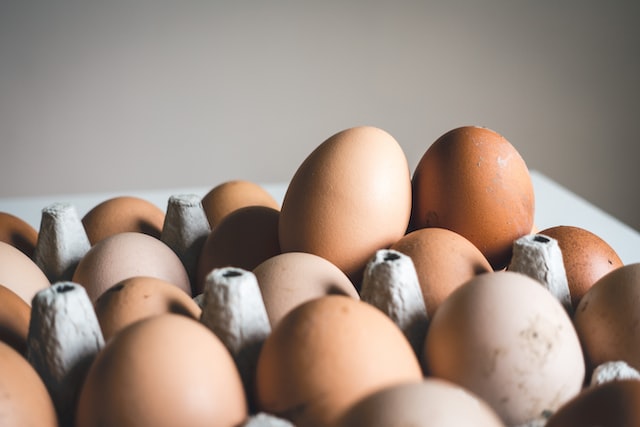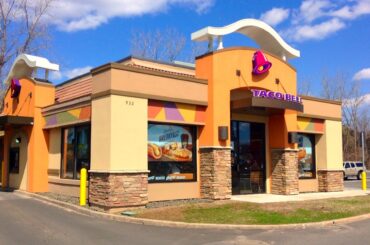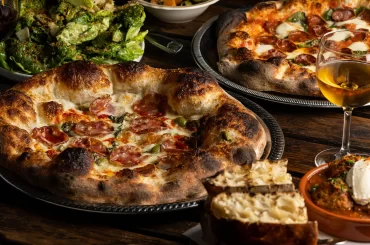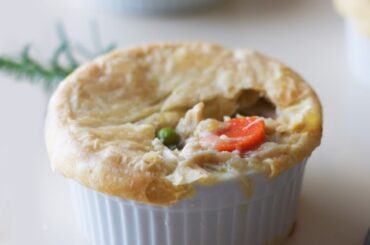Ever ate an omelet that was so fluffy it felt weightless? What about one so rich and moist in the middle that you’d swear they’d filled it with hot cheese despite you having ordered it plain?
The omelet I gobbled at San Juan Capistrano’s Délice Breton was a lot like that. Basically, it had nothing in common with any omelet I’d had before. Come down to it, calling the thing an omelet seems like a gross understatement. It should be called a “puff omelet” or a “soufflé omelet” at the very least.
At Délice Breton you get charged $10 if you order the basic model that has no fillings. And this is definitely the way you want to eat it, at least if you’re trying it for the first time, and sometimes even subsequently. Fillings aren’t all that good, and some might even call them unnecessary. Brittany is the place where this omelet is most popular, and there, it’s common for people to eat it beside a salad for dinner or lunch.
This omelet happens to be among the main attractions on Mont Saint-Michel, which is a Northwestern-French island you might have heard of thanks to its famous gravity-defying monastery. The former was invented by a late 1800’s woman who lived there, named Anne “Annette” Boutiaut Poulard. The success of the dish brought about the setting up of the La Mère Poulard restaurant, where this omelet has been served for 130 years.
Every notable French person from Coco Chanel to Monet has eaten these omelets. Paul Bocuse even declared once that “Mère Poulard is France,” and this is thanks to the way Poulard transformed the humble chicken’s egg into a dish which is, put simply, ethereal.
According to rumor, the secret behind the deliciousness rests in the amount of time they whip the eggs inside a copper bowl, before cooking them on top of an open fire along with lots of butter. So how long exactly does the whipping go on? David Lebovitz once surreptitiously watched a chef make it, and he says it’s five minutes. That, apparently, is how long it takes to make all those microbubbles which leaven the beaten egg into a kind of soufflé.
The first time I saw the cloud-like consistency this omelet possessed, I decided it must have taken a lot of effort to make it. What I also noticed was that unlike making it all-yellow like a regular Parisian omelet, this one was made to have a browned outer crust. The reason is that the omelet itself is not flipped before it’s put on the plate. Plus it’s huge—a thick crescent that’s about the size of a travel pillow. The fluffiness couldn’t possibly be overstated. While cutting in the fork went straight in, as if this was shampoo foam. Aside from being airy and light, the omelet was creamy as well, particularly in the middle, where the texture reminds one of cheese fondue.
It shouldn’t come as a surprise then that the people who set up the new bistro hail from the same geographical region as the omelets which they prepare. Because of this fact, Crepe Maker Audrey Marquier, Jean-Michel Ochsenbein, and Charlotte Le Villain are careful when it comes to recreating the food in the same way as the place it originated from.
The galettes are simply superb, comprising an edible lace doily which has flavors of the buckwheat that acts as the source of the dish. The most satisfying way to have one of these is to cover one of the vegan Breton sausages with the pungent and stretchy cheese alongside onion confit. One bite can take you all the way to remembering the classic hot dog of NY streets, despite the sausage being manufactured from Beyond Meat.
For cheese lovers, one of the options is a quiche that is chock full of Shropshire Blue, Swiss, Mimolette, and Tomme de Savoie. And because the quiche is almost fully fromage and not much egg, you get to enjoy super-richness and density when you dig in. One slice for breakfast will make sure that you need very little for the remainder of the day.
Dessert options include Marquier’s own crepes, which may possibly be the best in the country. It’s hard to find one this buttery and eggy; the banana chocolate version is testament to the fact that she knows exactly how an OG master prepares crepes. The banana isn’t just sliced; it’s mashed into a paste which is then spread under the crepe. What results is every bite having equal portions of chocolate sauce, fruit, and pancake.
One thing you need to be warned of though: After having the crepe, it can become hard to settle for a lesser make type that has carelessly slathered Nutella and lazily cut bananas. The same goes for any omelets you might eat subsequent to dining at Délice Breton.



